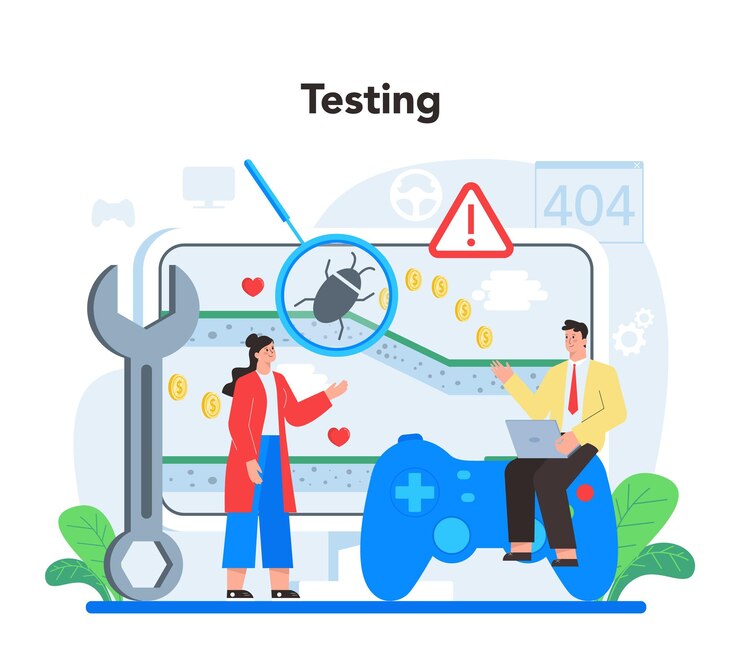In the age of digital transformation, APIs have become the backbone of modern software applications. RESTful APIs, in particular, are widely adopted due to their simplicity, scalability, and compatibility with web standards. However, ensuring the reliability, performance, and security of these APIs requires robust REST testing. Selecting the right REST testing framework is a critical step in achieving this goal.
This article will explore the importance of REST testing, the key factors to consider when choosing a testing framework, and a detailed comparison of popular tools to help you make an informed decision for your project.
What is REST Testing?
REST testing involves validating the functionality, performance, security, and reliability of RESTful APIs. It ensures that APIs meet their requirements and perform seamlessly under various conditions. Common aspects of REST testing include:
- Functional Testing: Verifying that API endpoints behave as expected.
- Performance Testing: Assessing how the API performs under different loads.
- Security Testing: Identifying vulnerabilities to prevent unauthorized access.
- Integration Testing: Ensuring that APIs integrate effectively with other systems.
- Regression Testing: Confirming that recent changes don’t break existing functionality.
Choosing the right framework for REST testing is vital for streamlining these processes and delivering high-quality APIs.
Key Factors to Consider When Choosing a REST Testing Framework
Before selecting a REST testing framework, consider the following factors to ensure it aligns with your project requirements:
1. Ease of Use
The framework should have an intuitive interface and a shallow learning curve. This is especially important if your team includes members who are new to REST testing.
2. Automation Capabilities
Automation is key to efficient API testing. Look for frameworks that support test automation, enabling you to run tests frequently and integrate them into CI/CD pipelines.
3. Scalability
As your application grows, so will the complexity of your APIs. Choose a framework that can handle increasing numbers of endpoints and test cases.
4. Integration Support
The framework should seamlessly integrate with your existing tools, such as version control systems, CI/CD platforms, and test management tools.
5. Community and Documentation
A strong community and comprehensive documentation can help you troubleshoot issues and learn best practices.
6. Cost
While some frameworks are free and open-source, others may require a license. Evaluate your budget and choose a framework that offers the best value for your investment.
Top REST Testing Frameworks
Here’s a comparison of some of the most popular REST testing frameworks, each offering unique features and advantages:
1. Postman
Postman is one of the most widely used tools for REST testing. Its user-friendly interface and extensive feature set make it a favorite among developers and testers.
Features:
- Intuitive GUI for creating, testing, and managing API requests.
- Supports automation through Newman, a command-line companion.
- Detailed reporting and collaboration tools.
- Integrates with CI/CD pipelines and version control systems.
Pros:
- Ideal for beginners.
- Strong community support and documentation.
Cons:
- Limited functionality in the free version.
- Not designed for large-scale automated testing.
2. SoapUI
SoapUI, by SmartBear, is a powerful tool for testing both SOAP and RESTful APIs. It is available in both open-source and commercial versions.
Features:
- Supports functional, load, and security testing.
- Drag-and-drop test creation.
- Scripting capabilities using Groovy.
Pros:
- Comprehensive feature set.
- Suitable for complex API testing scenarios.
Cons:
- Steeper learning curve compared to Postman.
- The Pro version can be expensive.
3. RestAssured
RestAssured is a Java-based library for testing RESTful APIs. It is a popular choice for developers who prefer coding their test cases.
Features:
- Fluent syntax for creating API tests.
- Supports BDD (Behavior-Driven Development).
- Extensive support for authentication and validation.
Pros:
- Highly customizable.
- Excellent for automated testing.
Cons:
- Requires Java knowledge.
- No GUI, making it less suitable for non-developers.
4. Katalon Studio
Katalon Studio is an all-in-one testing platform that supports API, web, mobile, and desktop testing.
Features:
- Built-in templates for REST testing.
- Supports automation and CI/CD integration.
- Detailed reporting and analytics.
Pros:
- Easy to use with minimal coding required.
- Suitable for teams with diverse testing needs.
Cons:
- Requires installation.
- Limited features in the free version.
5. JMeter
Apache JMeter is a popular open-source tool for performance testing, but it also offers capabilities for REST API testing.
Features:
- Extensive support for performance and load testing.
- Configurable test plans and scripts.
- Supports distributed testing.
Pros:
- Free and open-source.
- Excellent for performance-focused API testing.
Cons:
- Steeper learning curve.
- Primarily designed for performance, not functional testing.
6. Tavern
Tavern is a Python-based testing framework specifically designed for RESTful APIs.
Features:
- YAML-based configuration for test cases.
- Strong integration with Pytest.
- Supports JSON validation and HTTP authentication.
Pros:
- Lightweight and developer-friendly.
- Ideal for Python-based projects.
Cons:
- Limited GUI options.
- Smaller community compared to other tools.
How to Choose the Right Framework
To choose the best REST testing framework for your project, follow these steps:
- Assess Your Team’s Skill Set: If your team prefers coding, RestAssured or Tavern might be suitable. For non-developers, tools like Postman or Katalon Studio are better choices.
- Define Your Testing Goals: If performance testing is a priority, JMeter is an excellent option. For functional testing, consider Postman or SoapUI.
- Consider Project Complexity: For large-scale projects with complex APIs, choose a framework that supports automation and scalability.
- Evaluate Integration Needs: Ensure the framework integrates with your existing tools and workflows.
- Test Before Committing: Most tools offer free versions or trials. Experiment with a few options to see which one fits your requirements.
Conclusion
REST testing is a vital process for ensuring the quality and reliability of your APIs. With a plethora of frameworks available, choosing the right one can significantly impact the efficiency and effectiveness of your testing efforts. Consider your project requirements, team expertise, and testing goals to select a framework that aligns with your needs.
Whether you opt for the simplicity of Postman, the comprehensive features of SoapUI, or the code-driven flexibility of RestAssured, investing in the right REST testing tool will streamline your development process and deliver better outcomes for your users. Start exploring these frameworks today to elevate your API testing strategy.



